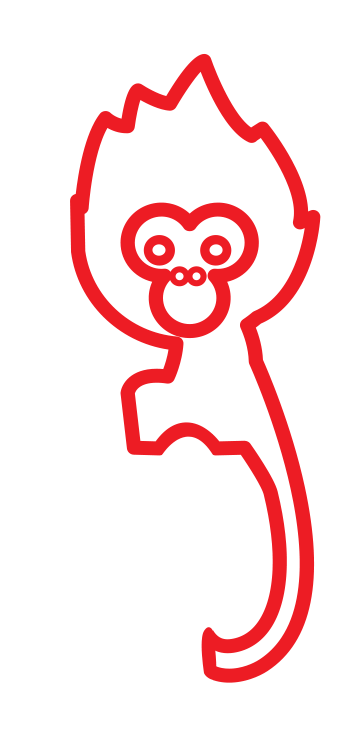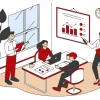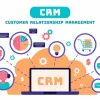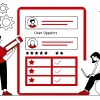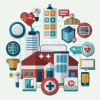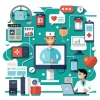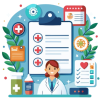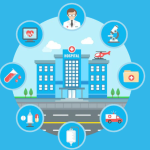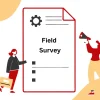
Facilities Cleanliness Survey: How to Assess?
Maintaining clean facilities is vital for ensuring health, safety, and satisfaction across various environments, such as hospitals, banks, schools, and offices. A Facilities Cleanliness Survey is the cornerstone of effective assessment, enabling organizations to check the state of their cleanliness standards, identify gaps, and implement necessary improvements.
In this article, we’ll explore how to conduct such a survey efficiently, what key factors to assess, and how to use the data for impactful results.
What is a Facilities Cleanliness Survey?
A Facilities Cleanliness Survey is a structured evaluation tool designed to measure cleanliness standards in a facility. These surveys are used to monitor hygiene, ensure compliance with health regulations, and boost overall user satisfaction. Whether you are managing cleanliness facilities at hospitals, banks, or any other institution, a cleanliness survey serves as a foundation for actionable insights.
Why Conduct a Facilities Cleanliness Survey?
A facilities cleanliness survey is a vital tool for ensuring operational excellence, user satisfaction, and regulatory compliance.
1. Health and Safety Compliance
Cleanliness directly impacts the health and safety of occupants, particularly in environments such as hospitals, food production facilities, and schools.
- Infection Prevention: Proper cleanliness protocols help in preventing the spread of infections, including bacteria, viruses, and fungi. For instance, sterilized equipment in healthcare settings reduces hospital-acquired infections.
- Hazard Elimination: Clean environments mitigate risks of physical hazards such as slips and falls caused by wet or greasy floors.
2. Enhancing User Experience
The cleanliness of a facility shapes the perceptions and experiences of its users.
- Positive Impressions: Visitors, clients, and employees subconsciously associate cleanliness with professionalism and care. For example, spotless restrooms in a restaurant can improve customer satisfaction and trust.
- Comfort and Productivity: Clean workspaces create a comfortable atmosphere, boosting employee morale and productivity.
3. Optimizing Operational Efficiency
Surveys highlight inefficiencies in cleaning routines, leading to better resource allocation.
- Streamlined Cleaning Processes: Identifying areas that require more frequent cleaning can optimize staff schedules, reduce overuse of cleaning supplies, and cut down costs.
- Preventive Maintenance: Regular cleanliness checks can uncover maintenance needs early, such as mold or pest issues, saving significant repair costs in the long run.
4. Meeting Regulatory Requirements
Certain industries face stringent hygiene and cleanliness mandates to maintain licenses and avoid penalties.
- Compliance Assurance: In sectors like healthcare and food processing, regulatory bodies such as OSHA and FDA set rigorous cleanliness standards. Surveys ensure these requirements are consistently met.
- Audit Preparedness: Maintaining records from cleanliness surveys provides documentation to demonstrate compliance during inspections.
5. Data-Driven Improvements
Cleanliness surveys provide actionable data for continuous improvement.
- Identifying Trends: Analysis of survey results can reveal patterns, such as seasonal cleaning demands or recurring problem areas.
- Employee Training: Insights from surveys can inform targeted training programs for cleaning staff, ensuring adherence to best practices.
Steps to Conduct an Effective Facilities Cleanliness Survey
1. Define Objectives
The foundation of any effective survey lies in its purpose. Determine whether the goal is compliance (ensuring adherence to regulations), performance measurement (assessing the efficiency and effectiveness of cleaning processes), or customer satisfaction (understanding user perceptions).
To measure progress accurately, identify specific metrics like visual cleanliness (appearance of surfaces), air quality (pollutant levels), and surface sanitation (cleanliness at a microbial level).
2. Develop a Survey Framework
Divide the survey into sections addressing key areas such as restrooms, lobbies, workspaces, and specialized zones. Use a standardized rating scale (e.g., Excellent, Good, Needs Improvement) to maintain uniformity in assessments.
Add open-ended questions to capture subjective feedback, offering insights that numerical data might miss.
3. Engage Stakeholders
Stakeholder involvement is vital for credibility and accuracy. Train cleaning staff on the survey’s purpose, methodology, and significance to ensure accurate data collection. Collect feedback from employees and visitors for a comprehensive perspective, highlighting areas that may need improvement from multiple viewpoints.
4. Use Technology for Data Collection
Modern tools streamline data collection and analysis. Leverage mobile apps for real-time feedback, allowing immediate identification of problem areas. Employ automated analysis tools to generate reports and track trends over time, reducing manual effort and increasing precision.
5. Conduct Regular Audits
Consistency is key to maintaining standards. Schedule surveys at regular intervals to monitor changes, identify trends, and adjust cleaning protocols accordingly. Compare results from different periods to check the impact of interventions and track progress toward objectives.
Key Areas to Assess in a Facilities Cleanliness Survey
1. Surface Cleanliness
Evaluate cleanliness at commonly touched areas like Inspect desks, floors, and high-touch points like doorknobs. Utilize ATP (adenosine triphosphate) testing to detect organic residues and biological contamination, ensuring deeper sanitation.
2. Restroom Hygiene
A critical component of any cleanliness survey is to assess soap and towel availability, the cleanliness of toilets, and the disposal of trash. Check for foul odors and ensure waste bins are regularly emptied, as these directly influence user satisfaction.
3. Air Quality
Indoor air quality (IAQ) plays a vital role in health by measuring for pollutants, allergens, and proper ventilation. Regularly inspect and maintain HVAC systems to enhance air circulation and minimize health risks.
4. Waste Management
Efficient waste management reflects overall cleanliness to ensure timely and correct disposal of waste, including separating recyclables when applicable. Monitor for any overflow in bins, as it can detract from the perceived cleanliness of the facility.
5. Employee and Visitor Perception
Perceptions often reveal overlooked areas:
- Use digital or physical feedback kiosks to gauge satisfaction.
- Analyze qualitative data from employees and visitors to identify gaps in cleaning protocols.
6. Specialized Areas
Tailor assessments to unique environments for healthcare that Include sanitation in operation rooms and patient wards. For financial institutions: Focus on the cleanliness of customer interaction points like ATMs or counters.
Use Survey Results for Action
1. Analyze Data
Turn raw data into actionable insights to identify recurring low scores in specific areas (e.g., restrooms) and trace the root cause, such as infrequent cleaning schedules or inadequate supplies.
2. Prioritize Interventions
Focus on high-traffic and public-facing areas that impact user perceptions the most. Establish KPIs (Key Performance Indicators) to measure cleaning staff performance effectively.
3. Implement Corrective Measures
Proactive changes improve outcomes conduct training sessions to align cleaning staff with best practices. Upgrade equipment or supplies to enhance cleaning efficiency.
4. Communicate Results
Transparency fosters trust and shares survey findings with employees, management, and users to highlight improvements and identify ongoing challenges. Use visuals like charts and graphs to make the data accessible and engaging.
5. Monitor Progress
Ensure that corrective actions are effective conduct follow-up surveys to evaluate the success of implemented changes. Use feedback loops to refine strategies continuously, maintaining high cleanliness standards.
Tools and Technologies for a Facilities Cleanliness Survey
1. Mobile Apps for Data Collection and Reporting
Mobile apps are widely used to simplify survey processes:
- Ease of Use: These apps provide intuitive interfaces for quick data input, even by non-technical staff. Customizable templates allow tailoring questions to suit specific facilities.
- Real-Time Reporting: Collected data is instantly uploaded to cloud platforms, enabling managers to access survey results in real-time.
2. IoT Sensors for Continuous Monitoring
The Internet of Things (IoT) has revolutionized facilities management by providing automated, real-time monitoring:
- Air Quality Sensors: Devices measure CO2 levels, humidity, and the presence of allergens or pollutants, ensuring compliance with health standards.
- Restroom Supply Monitoring: Smart dispensers and trash bins notify staff when supplies are low or bins are full, optimizing restocking and cleaning schedules.
3. Software Platforms for Analytics and Performance Tracking
Comprehensive software platforms provide centralized dashboards that consolidate data from various sources:
- Data Visualization: Dashboards turn raw data into actionable insights using charts, graphs, and trend analysis.
- Performance Metrics: Tools allow managers to set and track KPIs, such as average cleaning times, frequency of issues, and overall cleanliness ratings.
4. Augmented Reality (AR) for Staff Training
AR-based tools are increasingly being used for interactive and immersive staff training:
- Visual Guides: AR overlays can provide step-by-step cleaning instructions, ensuring consistency across teams.
- Simulated Environments: Training sessions can simulate real-world cleaning scenarios, helping staff practice responses to specific challenges.
5. Artificial Intelligence (AI) for Predictive Analytics
AI-driven tools analyze data to identify trends and anticipate future needs:
- Predictive Maintenance: AI can forecast equipment breakdowns, ensuring timely repairs and reducing downtime.
- Resource Allocation: Machine learning algorithms optimize the distribution of cleaning staff and supplies based on historical data.
Conclusion
A well-executed Facilities Cleanliness Survey is a game-changer for maintaining high cleanliness standards. By identifying problem areas, allocating resources wisely, and involving stakeholders, organizations can enhance safety, satisfaction, and compliance. Regular surveys backed by actionable insights are the key to cleaner, more welcoming facilities.
Frequently Asked Questions? (FAQs)
How Often Should A Facilities Cleanliness Survey Be Conducted?
For optimal results, conduct surveys quarterly. However, high-traffic environments like hospitals may require monthly assessments.
What Should I Include In A Cleanliness Survey For Banks?
Focus on ATM sanitization, customer service areas, and restrooms. Assess high-touch surfaces like counters and door handles.
How Can I Improve Participation In The Survey?
Incentivize participants with small rewards, and ensure the survey is short and easy to complete
Can Cleanliness Surveys Reduce Operational Costs?
Yes, identifying inefficiencies helps optimize cleaning schedules, reducing unnecessary expenditures.
Enhance Patient Care and NABH Compliance with LazyMonkey
LazyMonkey is your all-in-one solution for improving patient care, retaining more patients, and meeting NABH standards. Our powerful QR-based feedback tool enables you to capture real-time insights from patient feedback, discharge surveys, staff and doctor evaluations, and clinical research, while also streamlining inter-departmental communication.
Transform your healthcare facility today - reach out to us at hello@lazymonkey.in, or request a demo here!
Elevate Your Restaurant Experience with LazyMonkey
LazyMonkey’s QR-based feedback system helps you gather real-time insights from customers, track satisfaction levels, and enhance the dining experience. Get instant feedback on your menu, service, and ambience, and make data-driven improvements to boost repeat customers and reviews.
Improve your restaurant today – reach out to us at hello@lazymonkey.in, or request a demo here!
Empower Student Engagement and Campus Improvement with LazyMonkey
LazyMonkey offers a seamless way to gather student feedback, track satisfaction, and enhance campus life. From course evaluations to dorm feedback, our QR-based solution makes it easy to capture valuable insights and improve student retention.
Upgrade your university experience – contact us at hello@lazymonkey.in, or request a demo here!
Streamline Feedback and Drive Performance Across Your Enterprise/Franchise with LazyMonkey
Whether you manage one or multiple locations, LazyMonkey’s QR-based feedback system helps you gather real-time employee and customer feedback. Improve operational efficiency, track satisfaction, and make data-driven decisions to enhance brand consistency and growth.
Transform your franchise today – reach out to us at hello@lazymonkey.in, or request a demo here!
Enhance Customer Satisfaction and Service Standards in Banking with LazyMonkey
LazyMonkey empowers banks to capture real-time feedback from clients across branches. Improve customer experience, assess service quality, and ensure regulatory compliance with our QR-based solution, helping you retain clients and meet banking standards.
Elevate your bank’s customer care – contact us at hello@lazymonkey.in, or request a demo here!
Boost Customer Engagement and Mall Satisfaction with LazyMonkey
LazyMonkey’s QR-based feedback tool enables you to collect feedback from shoppers, track satisfaction, and enhance the mall experience. Gather insights on store services, cleanliness, and entertainment to create an unmatched customer journey.
